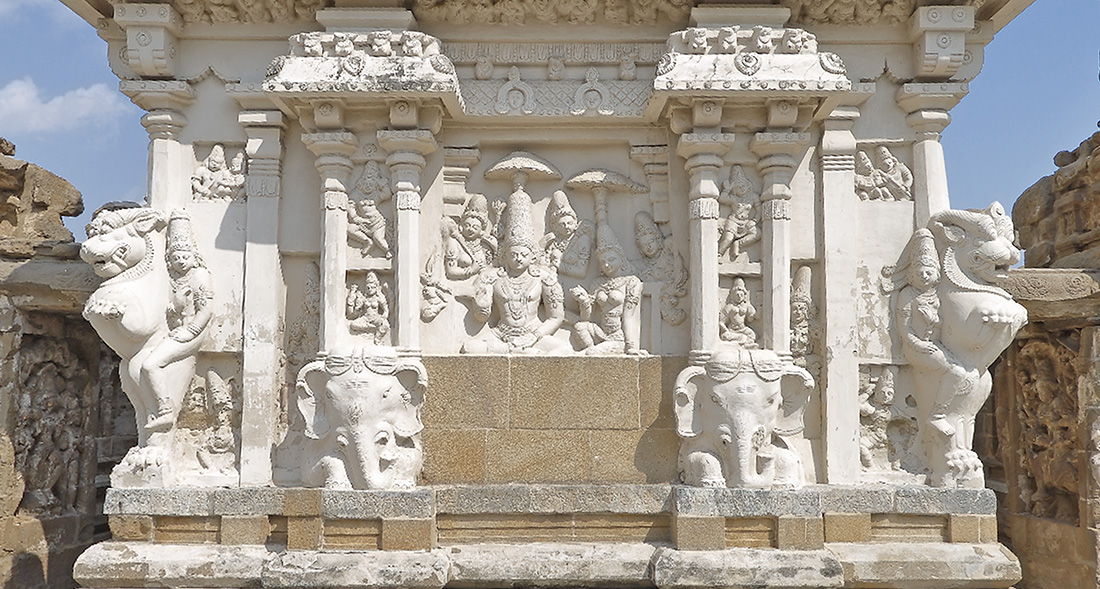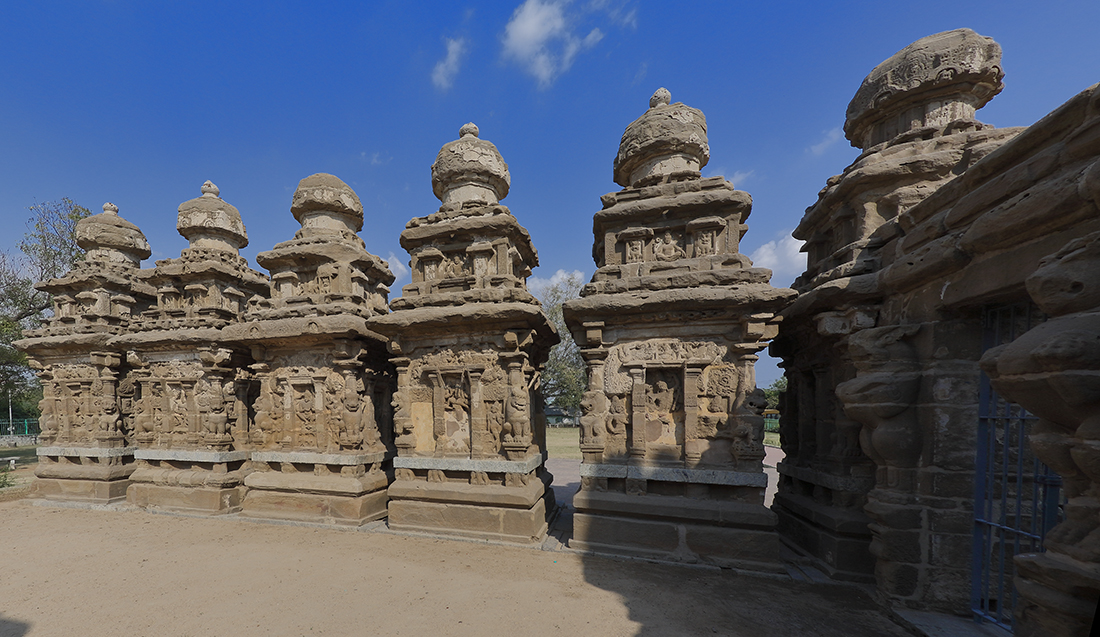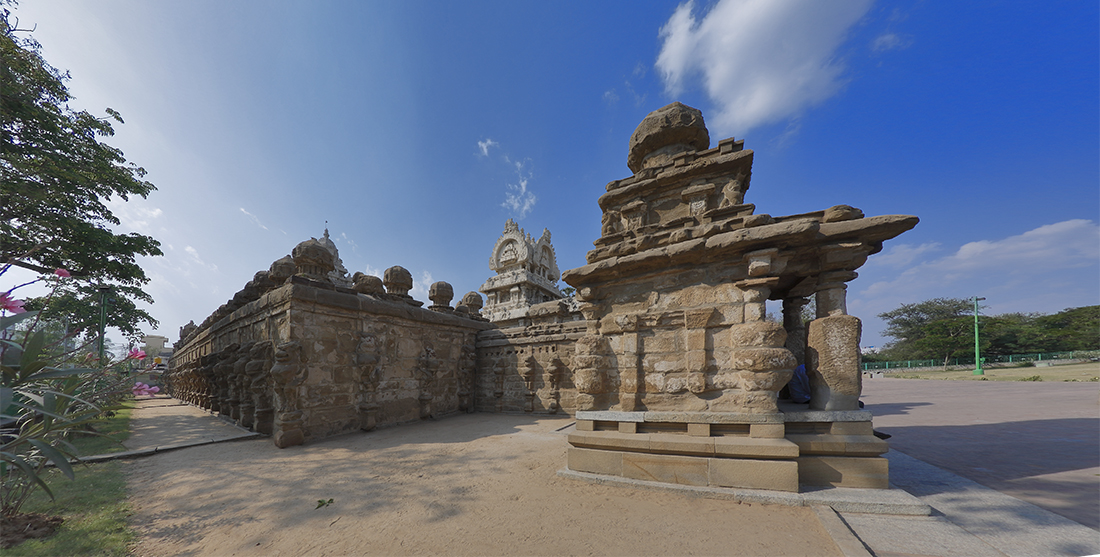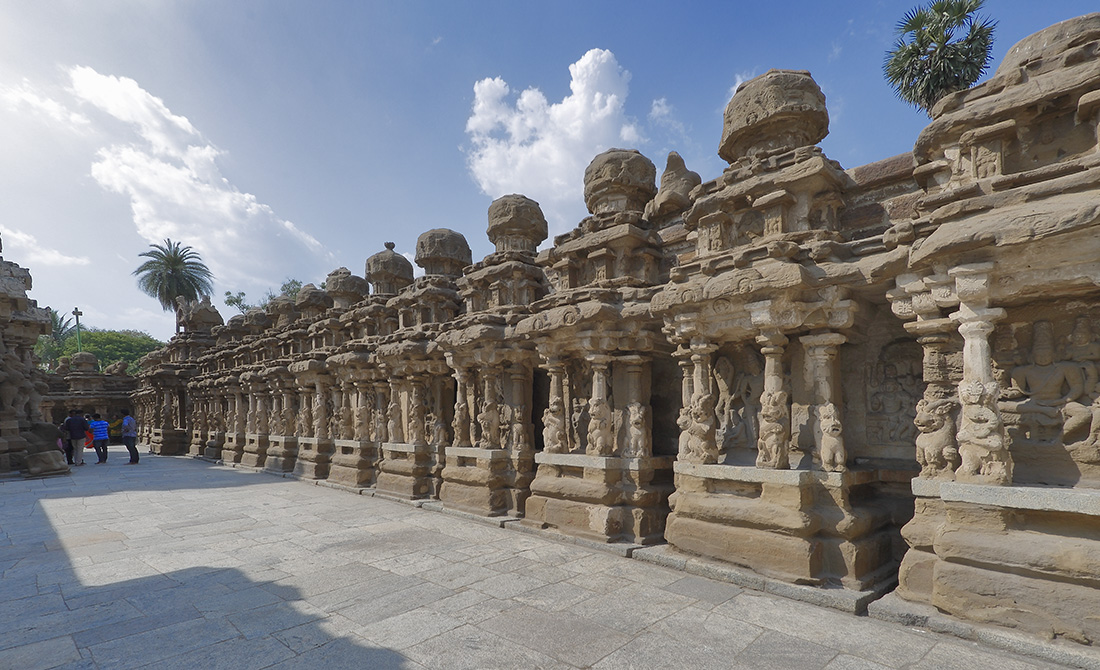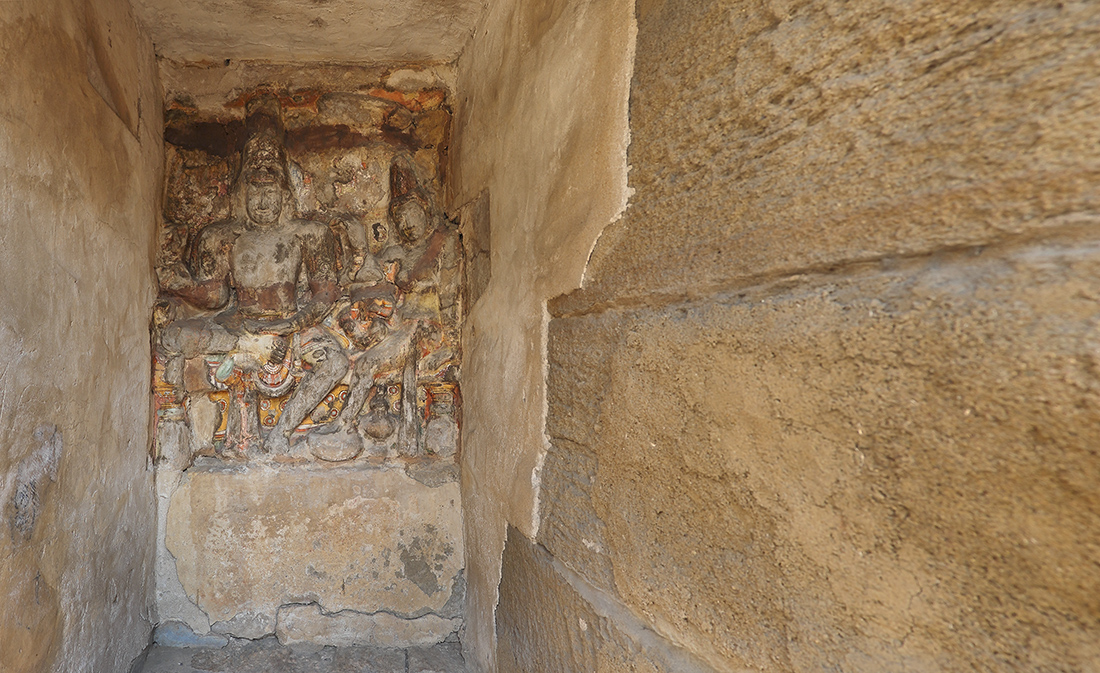This tour has 8 nodes/spots in all. To view each of the spot, please hover the mouse over the thumbnails and click on it in the bottom middle of the tour window. If you wish to view this sopt on the map, click on the co-ordinates.
The entrance wall is decorated with eight small shrines and a gopura, precursor to the main gopura. Currently, Kanchi Kailasanathar Temple is maintained by Archaeological Survey of India.
The temple complex is complete in all respects as it has garbagriha, antaralaya, mandapa, a high compound wall, an entrance gate, and the gopuram. The mandapa, which was initially detached, was made part of the main shrine by interposing an ardhamantapa. The pillars of the mandapa have the repetitive features of mythical lion mounts.
The tower has multiple shrines embodied on all its external faces which looks like miniature shrines. All these 58 small shrines are built into the niches of the compound wall that encloses the main shrine they depict Somaskanada reliefs of Shiva and his consort Parvathi in many dance forms.
It is believed that making the circumambulation around the various deities would usher the same blessings as visiting paradise. During completion of circumambulation – crawling and coming out of the passage also indicates – coming out of mother’s womb and also explains Hindu’s belief of rebirth. Hence, exit is called Gate of Birth. There is another belief that by completing this circumambulatory passage the possibility of rebirth is not there and one shall attain Moksha.
Co-ordinates: 12.842311°N 79.689573°E
Kailasanathar Temple, Kanchipuram
Kailasanathar Temple was built by Rajasimha Pallava also known as Narsimhavarman II, between 685-705CE.
The frontal elements to the main temple were added later by his son Mahendra Varma III and stands as the only temple with original Pallava architecture without any mix of additions by later kings.
The entrance wall is decorated with eight small shrines and a gopura, precursor to the main gopura. Currently, Kanchi Kailasanathar Temple is maintained by Archaeological Survey of India.
The temple complex is complete in all respects as it has garbagriha, antaralaya, mandapa, a high compound wall, an entrance gate, and the gopuram. The mandapa, which was initially detached, was made part of the main shrine by interposing an ardhamantapa. The pillars of the mandapa have the repetitive features of mythical lion mounts.
The tower has multiple shrines embodied on all its external faces which looks like miniature shrines. All these 58 small shrines are built into the niches of the compound wall that encloses the main shrine they depict Somaskanada reliefs of Shiva and his consort Parvathi in many dance forms.
It is believed that making the circumambulation around the various deities would usher the same blessings as visiting paradise. During completion of circumambulation – crawling and coming out of the passage also indicates – coming out of mother’s womb and also explains Hindu’s belief of rebirth. Hence, exit is called Gate of Birth. There is another belief that by completing this circumambulatory passage the possibility of rebirth is not there and one shall attain Moksha.

